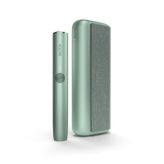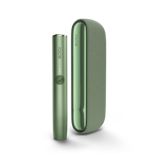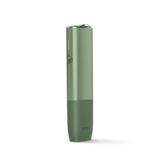Feb 12, 2025
How to Clean a Vape Tank
Being an adult user who has only just switched over from continued smoking to vaping, you may be unsure about cleaning your vape. Most rechargeable devices require vape tank cleaning. If you are looking for information about how to clean a vape tank, thankfully, the process is usually quite straightforward.
Here’s an easy, step-by-step process for one way you could clean your vape tank:
- Remove the tank from the main body of the device.
- Take the coil out of the vape tank.
- Pour out any e-liquid that may still be in the tank.
- Place the tank in warm water and rinse thoroughly.
- Take the tank out of the warm water and dry it with a clean towel.
- Set the tank aside on a clean towel to allow any remaining water to dry off.
- Once fully dried, reassemble the device.
What you might need:
- Warm water (held in either a sink or a bowl).
- Clean towels.
This process could be useful for washing certain devices, but it’s always best to check the manufacturer’s instructions beforehand, as particular products might need to be cleaned in a certain way.
How to Clean Vape Tanks Thoroughly
Sometimes, to maintain a clean vape tank, you might need to undertake a more thorough clean-up than the steps outlined above. When a device has been used regularly and not cleaned, it may require deeper cleaning. If this is the case, it might help to carry out the first three steps in the diagram above, before moving on to the following:
- Put dish soap and warm water onto a clean sponge.
- Scrub the vape tank with this sponge, removing all visible debris from the component.
- Once thoroughly scrubbed, rinse the vape tank with warm water and dry it with a clean towel. Be sure to wash away all of the soap residue from the tank.
- Set the tank aside on a clean towel so that any remaining water can dry from it.
What you might need:
- Soap.
- Warm water.
- Clean towels.
- One clean sponge.
Why You Should Clean Your Vape Tank
It’s important to learn how to clean a vape tank, as regular cleaning could help you maintain your vaping experience and keep your device in good condition. There are a few common situations where cleaning a vape tank might enhance your experience. For example, when switching between e-liquid flavours if you don’t clean the tank and coil first, you may still be able to taste the previous e-liquid while vaping the new one.
Maintaining a clean vape tank may also help to reduce e-liquid discolouration in the tank. When e-liquid sits (and is used) in a vape tank for a prolonged period of time, it may turn brown. You can learn more about e-liquid discolouration and what it means in our article ‘Why is My Vape Liquid Turning Brown?’
If e-liquid is left in a vape tank for too long, it may also clog the components of the vape – such as partially blocking the airflow of the tank. This could reduce the amount of vapour the device produces. By washing your vape tank regularly, you could prevent this from happening.
Tanks are not the only components of the vape you may want to clean and maintain though. Other parts, such as the coil, typically need regular upkeep.
How Often Should Vape Tanks Be Cleaned?
To keep a clean vape tank, it might be useful to wash it every one to two weeks. You could also give the tank a light clean whenever you switch e-liquids. In the end, how often you clean your vape tank can come down to personal preference, frequency of usage and the specifics of your device.
While cleaning the vape tank on a rechargeable device is an important part of device care and maintenance, it may not be necessary for other types of vaping devices.
Other smoke-free alternatives that do not require vape tank cleaning or maintenance are IQOS heated tobacco devices. Find out more on this product via the IQOS discovery page.
Smoke-free products are not risk-free and provide nicotine, which is addictive. The best decision any adult smoker can make is to quit tobacco and nicotine use altogether. Smoke-free products are not alternatives to quitting and are not designed as cessation aids.
This article is for general information and educational purposes. Some of the information in this article is based on external, third-party sources and we make no representations or warranties of any kind regarding the accuracy, validity or completeness of such information.













